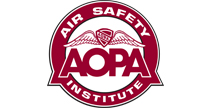Practice power line inspection ends in wire strike
(ERA09LA139)
 By David Kenny
By David Kenny
Flying next to power lines is one of the trickiest types of aerial work, but essential. Safety inspections require operating close enough to the wires to have a good view while still moving fast enough to cover long runs efficiently. In remote areas, helicopters may offer the only practical way to get construction crews onto transmission towers to rig the cables. Utility companies that operate their own flight departments take these flights very, very seriously, briefing each mission in detail and putting their new pilots through rigorous training and apprenticeship programs with power-line veterans. Free-lance pilots trying to learn to compete for this kind of work do well to plan their training just as carefully.
On January 22, 2009, a Hughes OH-6A helicopter crashed into an open field after striking the ground wires of a high-tension transmission line near Monroe, North Carolina. The cables fractured the swash plate’s pitch change links and separated the main rotor system from the fuselage, which fell about 50 feet and hit on its left side. The 1,100-hour certificated flight instructor in the right seat suffered serious injuries and persistent memory loss. The 250-hour commercial pilot in the left seat was killed.
Related Links
Surviving the Wires Environment
"Do the Right Thing" Safety Pilot article
"Maneuvering Flight" Safety Advisor
"Mapping the Mind" Safety Pilot article
The commercial pilot and his brother were competing for a contract to carry out inspections for a large regional utility. The utility company had requested that they fly a “sample mission,” and they’d recruited the CFI and leased the helicopter for that purpose. The commercial pilot was to play the role of inspector and possibly also share the flying duties; his former instructor told investigators that he “always wanted stick time.”
On the morning chosen, however, bad weather near the test site led the client to postpone the demonstration, so the crew cancelled the planned 70-nm cross-country flight to the company’s headquarters. Instead, they agreed to fly a practice inspection along power lines near their home field. This would also provide an opportunity to finish troubleshooting a balky GPS of the model the client specifically required on inspection flights. The CFI had removed it from the helicopter and worked on it at home the night before, but could not test it until it was reconnected to its antenna on the aircraft.
They took off about 10:00 a.m. and located the power lines, tracking them to the southwest. Witnesses saw them flying just off the right side of the cables at around 75 agl, and all agreed that the engine seemed to be running normally. However, as the CFI later reported, removing the GPS from the aircraft had caused it to revert to its default settings and give a steady series of obstacle warnings as they flew past the towers. Since the other pilot wasn’t familiar with the unit, he handed over the flight controls to concentrate on suppressing the alerts. He told investigators afterwards that the commercial pilot looked for opportunities to fly from the left seat, as he was training for a flight instructor’s certificate.
Adjusting the GPS required the CFI to bend all the way forward to the limit of his shoulder harness, preventing him from seeing outside. Track data downloaded from it afterwards showed that the helicopter made a 270-degree right turn to a path perpendicular to the power lines. The CFI recalled only a violent shaking and a noise he compared to “rolling a metal trash can down the street” before the crash. First responders found the high-tension wires intact, but the two ground cables above them were separated mid-span, about halfway between two transmission towers.
The reason for the turn was never explained. The surviving pilot didn’t remember turning, and nothing in his statements to investigators suggested that the two of them had planned or discussed the maneuver. In a supplemental statement, he did suggest that the smaller-diameter ground cables were difficult to see, and speculated that his companion might have forgotten that standard practice is to cross power lines directly above a tower, where all the wires were sure to be below the aircraft.
Other aspects of the accident also remain mysterious. NTSB investigators learned that the commercial pilot had a a history of kidney stones and hypertension as well as the use of prescription painkillers for knee pain, none of which had been reported on his last medical application. He’d had a fresh prescription filled the day before the accident, and toxicology tests were positive for hydrocodone. However, no witness suggested that he seemed impaired, and the Safety Board could not determine whether his use of medication contributed to the accident. Instead, they attributed it to his “failure to maintain clearance from a known wire hazard” without trying to explain why a pilot trained to commercial standards would turn away from that known hazard and keep turning until he hit the wires.